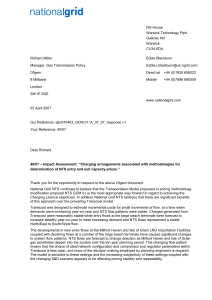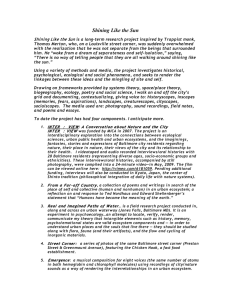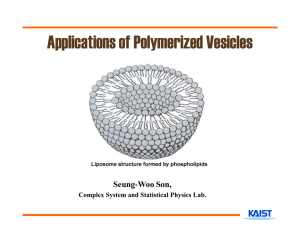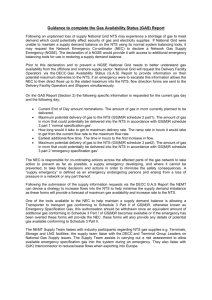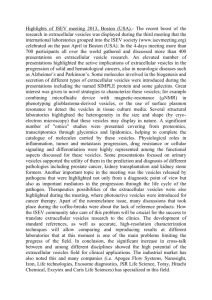Answer Key for Cells Alive
advertisement
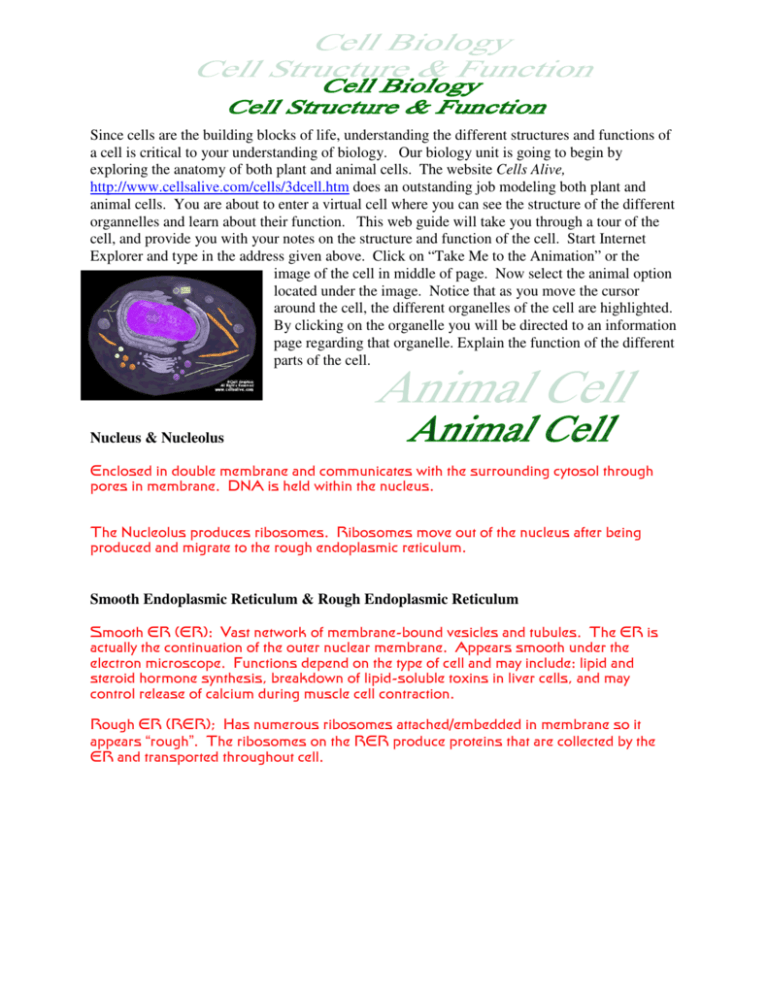
Since cells are the building blocks of life, understanding the different structures and functions of a cell is critical to your understanding of biology. Our biology unit is going to begin by exploring the anatomy of both plant and animal cells. The website Cells Alive, http://www.cellsalive.com/cells/3dcell.htm does an outstanding job modeling both plant and animal cells. You are about to enter a virtual cell where you can see the structure of the different organnelles and learn about their function. This web guide will take you through a tour of the cell, and provide you with your notes on the structure and function of the cell. Start Internet Explorer and type in the address given above. Click on “Take Me to the Animation” or the image of the cell in middle of page. Now select the animal option located under the image. Notice that as you move the cursor around the cell, the different organelles of the cell are highlighted. By clicking on the organelle you will be directed to an information page regarding that organelle. Explain the function of the different parts of the cell. Nucleus & Nucleolus Enclosed in double membr^ne ^nd communic^tes with the surrounding cytosol through pores in membr^ne. DN@ is held within the nucleus. The Nucleolus produces ribosomes. Ribosomes move out of the nucleus ^fter being produced ^nd migr^te to the rough endopl^smic reticulum. Smooth Endoplasmic Reticulum & Rough Endoplasmic Reticulum Smooth ER (ER): V^st network of membr^ne-bound vesicles ^nd tubules. The ER is ^ctu^lly the continu^tion of the outer nucle^r membr^ne. @ppe^rs smooth under the electron microscope. Functions depend on the type of cell ^nd m^y include: lipid ^nd steroid hormone synthesis, bre^kdown of lipid-soluble toxins in liver cells, ^nd m^y control rele^se of c^lcium during muscle cell contr^ction. Rough ER (RER); H^s numerous ribosomes ^tt^ched/embedded in membr^ne so it ^ppe^rs “rough”. The ribosomes on the RER produce proteins th^t ^re collected by the ER ^nd tr^nsported throughout cell. Centrosomes & Centrioles Centrosomes: Produces microtubules. These microtubules ^re used during mitosis to sep^r^te ^nd pull ^p^rt replic^ted chromosomes. In @NIM@L CELLS the centrosome is ^ctu^lly ^ p^ir of sm^ll org^nelles c^lled Centrioles. Centrioles: During @nim^l cell division these replic^te ^nd the centrosome divides. E^ch centrosome moves to opposite ends of the nucleus. While ^t the end of the nucleus, e^ch centriole grows microtubules th^t form ^ “spindle” which is responsible for sep^r^ting the replic^ted chromosomes. Golgi Body @lso know ^s the Golgi @pp^r^tus. @ membr^ne-bound structure with ^ single membr^ne (remember, the Nucleus h^s ^ double membr^ne). @ Golgi Body is ^ctu^lly ^ st^ck of membr^ne-bound vesicles. This structure is import^nt in p^ck^ging m^cromolecules for tr^nsport elsewhere in cell. The st^ck of l^rger vesicles is surrounded by sm^ller vesicles. These sm^ller vesicles cont^in the p^ck^ged m^cromolecules mentioned ^bove. @t the periphery of the Golgi Body the vesicles cont^in the enzym^tic or hormon^l contents of lysosomes, peroxisomes, ^nd secretory vesicles. Cytoskeleton Helps the cell m^int^in sh^pe. Prim^ry function is cell motility or movement. @llows for intern^l movement of org^nelles, cell locomotion, ^nd muscle fiber contr^ction. Composed of three prim^ry protein fil^ments: • microtubules • ^ctin fil^ments (microfil^ments) • intermedi^te fibers Cytosol Most cellul^r met^bolism occurs here in. The “liquidy” w^tery m^trix in which the org^nelles reside. @lthough mostly w^ter m^ny proteins th^t control cell functions ^re found here. These proteins control cellul^r functions such ^s sign^l tr^nsduction p^thw^ys, glycolysis, intr^cellul^r receptors, ^nd tr^nscription f^ctors. Cytopl^sm is the collective term for the cytosol ^nd ^ll the org^nelles th^t ^re suspended in the cytosol. Mitochondria @bout the size of b^cteri^, these org^nelles provide the energy for the cell to move, replic^te, contr^ct, etc. These org^nelles h^ve ^ double membr^ne (just like the nucleus) with the outer membr^ne being smooth ^nd the inner membr^ne h^ving ^ lot of convoluted folds (crist^e). The purpose of the crist^e is to incre^se surf^ce ^re^ ^nd is the site for p^rt of cellul^r respir^tion th^t combine oxygen with sug^r to m^ke @TP. Lysosomes Common in @NIM@L CELLS. Cont^in hydrolytic enzymes th^t ^re used for intr^cellul^r digestion (cell e^ting). In white bloods th^t e^t b^cteri^ the lysosome contents ^re slowly rele^sed into the v^cuole ^round the b^cteri^ ^nd then kill ^nd digest the b^cteri^. @n uncontrolled rele^se of lysosome contents results in cell de^th (necrosis). @re R@RE in Pl^nts. Hydrolytic enzymes in pl^nts ^re found in the v^cuole. Vacuole Membr^ne-bound s^c th^t pl^ys ^ role in intr^cellul^r digestion ^nd rele^se of cell w^stes/toxins. In ^nim^ls they ^re gener^lly sm^ll. V^cuoles ^re much l^rger in pl^nts ^nd ^re use in: storing nutrients storing w^ste products incre^sing cell size during growth ^cting like lysosomes regul^tes Turgor Pressure (keeps pl^nt from wilting) Cell Membrane Double l^yer of phospholipids (Phospholipid bily^r). The phospholipids cont^in hydrophilic ^nd hydrophobic portions. Embedded within the membr^nes ^re proteins th^t serve import^nt roles including moving m^teri^ls in ^nd out the cell, cell recognition, receptors for hormones, odors, t^stes, etc. What organelles are found in both plant and animal cells? Everything except chloropl^sts, centrioles, cell w^ll, What organelles are unique in the plant cells? Chloropl^sts, cell w^ll How do the centrosomes and centrioles differ between plants and animals? In pl^nts the centrosomes ^re simpler ^nd do not include centrioles. How do vacuoles differ between plant and animal cells? In pl^nts the v^cuoles ^re l^rge ^nd ^re used to store nutrients, w^ste products , ^nd is import^nt in m^int^ining turgor pressure (keeps pl^nt from wilting). Explain the function of the Cell Wall. Helps pl^nt cells m^int^in sh^pe ^nd serves ^s ^ protective b^rrier. Explain the difference between prokaryotic and eukaryotic cells. Prok^ryotic Cells: Primitive cells th^t l^ck membr^ne-bound org^nelles. H^s outer cell w^ll th^t give them sh^pe with ^ pl^sm^ membr^ne next to the cell w^ll. @n ex^mple is ^ b^cterium. Euk^ryotic Cells: L^rger (bigger th^n b^cteri^) highly developed cells th^t h^ve membr^nebound org^nelles. These cells h^ve speci^lized p^ck^ging ^nd tr^nsport mech^nisms needed to support their l^rger size. Ex^mples: Protozo^, higher pl^nts ^nd ^nim^ls, YOU!


